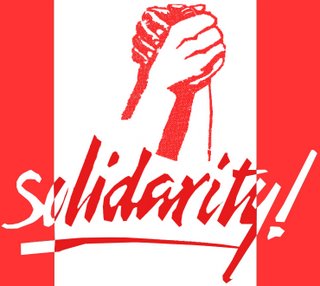A History of the Canadian Dollar
The decision to float, 1950
Once again, international economic conditions quickly changed and obliged the Canadian authorities to alter their approach to foreign exchange policy. The earlier depreciation of the Canadian dollar against its U.S. counterpart, which boosted Canadian exports, and rising commodity prices associated with the beginning of the Korean War in June 1950 had strengthened Canada's trade balance with the United States. At the same time, the economic recovery in Europe, aided by the Marshall Plan, which provided European countries with convertible U.S. dollars, boosted Canadian exports (Muirhead 1999, 138). There were also strong inflows of direct investment into Canada. Short-term capital inflows also increased sharply, particularly through the third quarter of 1950, as speculation regarding a Canadian dollar revaluation intensified.
In this environment, Canadian authorities became increasingly concerned about the inflationary impact of the inflows if Canada tried to maintain a fixed exchange rate. There was also concern that the inflows were leading to a "substantial and involuntary increase in Canada's gross foreign debt" (FECB 1950, 14).
On 30 September 1950, Douglas Abbott, the Minister of Finance, announced that
- Today the Government, by Order in Council under the authority of the Foreign Exchange Control Act, cancelled the official rates of exchange which had been in effect since September 19th of last year . . . . It has been decided not to establish any new fixed parity for the Canadian dollar at this time, nor to prescribe any new official fixed rates of exchange. Instead, rates of exchange will be determined by conditions of supply and demand for foreign currencies in Canada.
He also announced that any remaining import prohibitions and quota restrictions, imposed in November 1947, would be eliminated, effective 2 January 1951. Controls on imports of capital goods were also to be reviewed.
Interestingly, the idea of floating the Canadian dollar was widely discussed as early as the beginning of 1949. A then-secret memorandum prepared in January of that year and attributed to James Coyne, who later became Governor of the Bank of Canada, made the case for floating the currency while retaining exchange controls. In his paper, Coyne noted that it would be better to "have a natural rate which could move up or down from time to time as economic conditions might require." He also noted that government inertia made it very difficult for the authorities to adjust a fixed exchange rate in a timely manner (Coyne 1949).
Options other than floating the exchange rate were apparently dismissed as impractical, including revaluing the Canadian dollar upwards, widening the currency's permitted 1 per cent fluctuation band, or restricting capital inflows. Given the criticism levelled against the government after the 1946 revaluation of the Canadian dollar, followed by the short-lived 1949 devaluation, another revaluation was viewed as unacceptable. It was also unclear how much of a revaluation would be required to stem the capital inflows. Widening the bands also posed problems since it was unclear how wide the bands would have to be. Likewise, restrictions on capital inflows were seen as untenable from a longer-term perspective for a country dependent on foreign capital (Hexner 1954, 248).
This view is consistent with a speech on exchange controls given by Douglas Abbott, Minister of Finance, in December 1951,
- The conclusion I have come to is that we would be better advised not to rely on exchange restrictions, but rather on the general handling of our domestic economic situation to keep us in reasonable balance with the outside world and to maintain the Canadian dollar over the years at an appropriate relationship with foreign currencies.
The system envisaged by Coyne in 1949 of a floating Canadian dollar within a system of foreign exchange controls was put into practice when markets opened on 2 October 1950. With interbank trading now permitted, the Canadian dollar quickly appreciated, rising to roughly US$0.95.
With the floating of the Canadian dollar, the rationale for the continuation of exchange controls came into question. Through 1951, controls were progressively eased. Finally, on 14 December 1951, the Foreign Exchange Control Regulations were revoked by an Order-in-Council. New regulations were passed that exempted all persons and all transactions from the need for permits to buy and sell foreign exchange. The Foreign Exchange Control Act itself, which had been renewed for another two-year period earlier in 1951, was repealed in October 1952.
The unofficial exchange market
Shortly after the imposition of exchange controls in 1939 and the official fixing of the Canadian dollar's value in terms of the U.S. dollar by the FECB, an unofficial market for Canadian dollars developed in New York that persisted until the Canadian dollar was floated at the end of September 1950. This was a legal market involving transactions in Canadian dollars between non-residents of Canada. Residents of Canada were prohibited from acquiring foreign exchange through the unofficial market. Similarly, no resident of Canada was ever authorized to convert foreign exchange into Canadian dollars through the unofficial market.
The source of "inconvertible" Canadian dollars consisted of Canadian dollar bank balances held by non-residents when exchange controls were introduced in 1939, sales by U.S. residents of certain types of assets (such as real estate), and the proceeds of maturing Canadian dollar securities paid to non-residents.
Canadian dollars purchased in the unofficial market could be used only in a very circumscribed manner. For example, they could not be used to purchase Canadian goods and services. In this regard, the purpose of exchange controls was not just to conserve available foreign exchange but also to maximize the receipt of foreign exchange. U.S. residents wishing to buy Canadian securities or real estate were, however, permitted to use Canadian dollars obtained in the unofficial market, as could travellers to Canada.
The unofficial market for Canadian dollars ended with the floating of the Canadian dollar. Throughout most of its existence, the inconvertible Canadian dollar traded at a sizable discount compared with its official counterpart. The spread between the two rates mirrored the pressures on the Canadian economy, widening to more than 10 per cent during the darkest months of 1940 and narrowing as the war progressed and Canadian prospects improved. By 1945, the discount was temporarily eliminated. Indeed, for a few months during 1946, prior to the upward revaluation of the official Canadian dollar back to parity with its U.S. counterpart, the inconvertible Canadian dollar traded at a slight premium in the free market.
Interestingly, when the official rate was finally revalued on 5 July 1946, the inconvertible Canadian dollar, while also appreciating, did not move up the whole amount. It generally traded between US$0.95 and US$0.96 through the remainder of that year. Clearly, the revaluation was not viewed as completely credible by free-market participants. Indeed, the free rate slowly weakened over the next few years, foreshadowing the eventual devaluation of the official rate in September 1949. 42
The inconvertible Canadian dollar declined with the devaluation of the official exchange rate in 1949, but to a lesser extent, temporarily eliminating the differential between the two rates. With the inconvertible Canadian dollar continuing to weaken to about US$0.8840, through the winter of 1949-50, a differential of roughly 2.5 per cent temporarily re-emerged. Sudden improvement in Canadian economic prospects, however, and strong capital inflows from the United States, eliminated the differential between the two rates once again by March 1950. Indeed, the unofficial rate actually moved to a marginal premium to the official rate immediately prior to the decision to float the Canadian dollar.
The relevance of the unofficial rate
During the 1940s, there was an active debate over whether the unofficial rate was the "true" value of the Canadian dollar. The Bank of Canada maintained that given the "limited use" of inconvertible Canadian dollars and the small size of the market, prices were not necessarily an accurate reflection of sentiment towards the Canadian dollar (FECB 1947, 5). 43
This was disputed by many economists, including then-assistant professor of economics, Milton Friedman. In a 1948 University of Chicago debate with Donald Gordon, Deputy Governor of the Bank of Canada, and Dr. W. A. Mackintosh, head of the economics department at Queen's University and wartime economic adviser to the government, Friedman argued that there was no particular reason why a small market should necessarily lead to a distorted price. He also argued strongly that Canada should introduce a flexible exchange rate rather than relying on a system of exchange controls to balance trade. Gordon, on the other hand, contended that a 10 per cent decline in the official Canadian dollar (to roughly the level prevailing in the unofficial market) would have comparatively little impact on trade flows (Friedman et al. 1948).
A Floating Canadian Dollar (1950-62)
As a member of the International Monetary Fund (IMF), Canada's decision to float the Canadian dollar was at odds with its commitment to the Fund to maintain a fixed exchange rate within the Bretton Woods system. 44 In this regard, in 1949 the Canadian authorities had established with the IMF a "par value" of US$0.9091 with a fluctuation band of 1 per cent. At least initially, floating was viewed as a temporary state of affairs. The minister of finance noted the government's intention to remain in consultation with the Fund and
- ultimately to conform to the provisions of the Fund's Articles of Agreement which stipulate that member countries should not allow their exchange rates to fluctuate more than one percent on either side of the par values from time to time established with the Fund (Abbott 1950).
It would be almost 12 years before Canada reintroduced a fixed exchange rate and regained the good graces of the IMF. Consequently, Canada came to be viewed as something of a maverick in international financial circles. The unwillingness to re-fix the exchange rate appears to have reflected concern about repeating the mistake of 1946 when the dollar was revalued upwards only to come under significant downward pressure the next year, followed by a devaluation in 1949.
After quickly rising to the US$0.95 level immediately after the exchange rate was freed, the Canadian dollar slowly appreciated, moving to a small premium of about 2 per cent vis-à-vis the U.S. dollar by 1952. From then until the end of 1960, it traded in a relatively narrow range between US$1.02 and US$1.06. The peak for the Canadian dollar during this period was US$1.0614, touched on 20 August 1957. Foreign exchange intervention by the Bank of Canada through the Exchange Fund Account was limited to smoothing short-run fluctuations of the Canadian dollar.
While unpopular in business circles, the floating exchange rate was strongly supported by academic economists as a means of insulating the domestic economy from external shocks, either inflationary or deflationary. It was also recognized that the two-way risk associated with a flexible exchange rate could itself lessen large capital movements (Hexner 1954, 253).
Canada's successful experiment with a flexible exchange rate regime through much of the 1950s inspired considerable early academic work on the merits of a flexible exchange rate system. Later, it would provide a model for the rest of the world when the Bretton Woods system of fixed exchange rates finally collapsed during the early 1970s.
Return to a Fixed Exchange Rate (1962-70)
During the late 1950s, Canadian authorities became concerned about a deterioration in Canada's international competitiveness, aggravated by its strong dollar, which continued to be supported by substantial capital inflows. After the investment boom of the mid-1950s, economic activity had slowed significantly, and the unemployment rate more than doubled from 3.4 per cent in 1956 to 7.2 per cent in 1961. In this environment, the government sought to ease policy in order to support demand and reduce the economic slack in the economy.
Bank of Canada Governor James Coyne resisted any significant easing, however. He viewed Canada's large current account deficit as a symptom of excessive demand pressures, even though domestic inflationary pressure had eased throughout this period, falling from somewhat more than 2 per cent in 1958 to 1.3 per cent by the end of 1960. He was convinced that
- to engage in further large over-all monetary expansion in an attempt to drive down interest rates generally, with or without the motive of thereby reducing the inflow of capital from abroad, is an unsound and dangerous approach and would prove to be an ineffective approach, to the problems of the exchange rate, of the recession, and of achieving more consistent economic growth (Bank of Canada 1960, 22).
The policy dispute between the government and the central bank came to a head during the summer of 1961. On 30 May, the government requested the resignation of Governor Coyne but was refused. On 20 June, the minister of finance introduced an expansionary budget and announced that the government would take steps to lower the value of the Canadian dollar, including, as necessary, purchasing substantial amounts of U.S. dollars in the exchange market (Fleming 1961a).The government also introduced a bill in Parliament (An Act Respecting the Bank of Canada) to declare the position of governor vacant (House of Commons 1961). The bill passed the House of Commons on 7 July, but after testimony by Governor Coyne, the Senate Standing Committee on Banking and Commerce concluded that there had been no misconduct on his part. On 14 July, the full Senate defeated the bill. Having had "his day in court," Governor Coyne resigned. Louis Rasminsky succeeded him as Governor on 24 July 1961 (Bélanger 1970).
Not surprisingly, the Canadian dollar began to weaken in this environment. From a level of about US$1.01 prior to the June budget statement, the dollar quickly fell to US$0.97. It weakened further in October 1961 to under US$0.96, following an announcement by the minister of finance that the appropriate discount of the Canadian dollar against the U.S. dollar "might well turn out to be greater than the present 3 per cent" (Fleming 1961b).
The introduction of a "managed" flexible exchange rate regime, under which the government would intervene to keep the Canadian dollar at a significant discount to its U.S. counterpart, as opposed to just smoothing fluctuations, was in some ways a compromise with the IMF. The Fund was encouraging Canadian authorities to return to a fixed exchange rate regime within the context of the Bretton Woods system. No new par value for the Canadian dollar was recommended, however. Additional time was seen as necessary to prepare for the re-establishment of a fixed rate.
After stabilizing at about US$0.95 between November 1961 and March 1962, the Canadian dollar began to weaken further, despite significant intervention by the Bank of Canada to support the currency. On 2 May 1962, the government, in agreement with the IMF, established a new par value for the Canadian dollar, fixing it at US$0.9250 with a fluctuation band of 1 per cent.
Fixing the exchange rate at a markedly lower level did not, however, relieve the pressure on the Canadian dollar. Doubts remained about the viability of the new rate, particularly given the prevailing political uncertainty. 45 Heavy official intervention was therefore required to hold the Canadian dollar within its allowed fluctuation band.
On 24 June 1962, the government announced a major economic and financial program aimed at restoring confidence in the Canadian dollar and indicated its determination to defend the currency's new par value. Measures taken included a tightening of fiscal and monetary policy, the imposition of temporary import surcharges, and the marshalling of US$1,050 million in financial support from the international community. This support consisted of a US$300 million drawing from the IMF, 46 a US$400 million line of credit from the U.S. Export-Import Bank, US$250 million under a reciprocal swap facility between the Bank of Canada and the Federal Reserve Bank of New York, and US$100 million from the Bank of England under a similar arrangement. 47 Other European central banks were also willing to provide additional assistance, if necessary (Bank of Canada 1962, 8).
This program restored confidence in the Canadian dollar. The resumption of private capital inflows during the second half of 1962 enabled the Canadian authorities to gradually ease the emergency measures imposed earlier. Much of the international financial assistance received, excluding that of the IMF, was repaid by the end of the year. Funds owed to the IMF were fully repaid by 1964. For the remainder of the decade, the Canadian dollar was maintained, relatively easily for the most part, within the permitted fluctuation band around its US$0.9250 par value.
The dollar did, however, come under significant, temporary downward pressure during the summer of 1963, following the U.S. announcement on 18 July that it would impose an "Interest Equalization Tax" on foreign borrowings in U.S. capital markets. Although Canada's current account deficit had narrowed significantly over the previous two years, it remained large. Consequently, there was a general fear that unless Canadian interest rates rose by an offsetting amount (roughly 1 percentage point per year), capital inflows from the United States would cease. On 31 July, the United States agreed to exempt Canada from the tax, with the proviso that Canada would not increase its foreign international reserves through the proceeds of borrowing in the United States (Bank of Canada 1963, 6). Downward pressure on the currency ceased with this agreement, and Canadian markets stabilized.
The Canadian dollar experienced another bout of temporary downward pressure in March 1968, after the U.S. announcement of controls on capital outflows. The pressure eased with an agreement on 7 March that exempted Canada from all such controls. Similar to the exemption from the Interest Equalization Tax, Canada agreed that the U.S. balance-of-payments position would not be impaired as a result of its actions.
Because of concerns about the Bank of Canada's ability to conduct monetary policy in light of these accords, there was a follow-up agreement with the United States on 17 December 1968, which stated that no particular level of reserves would have to be targeted (Bank of Canada 1968, 13). This made it easier for the Bank to intervene in foreign exchange markets during periods of upward pressure on the currency. 48
Also see: Bank of Canada History of the Canadian Dollar











